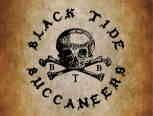Ahoy, me hearties! Prepare to set sail on a journey through the treacherous seas of pirate history. But hold on to your tricorns, for we shall be uncovering the hidden truths behind these swashbuckling scoundrels.
When we think of pirates, our minds often conjure up images of eye patches, peg legs, and parrots perched on shoulders. Blame it on Hollywood’s romanticized portrayal of these seafaring rogues. But let me tell you, mateys, the real story is far more fascinating than any movie script.
Myths About Pirates
Buried Treasure
One of the most common myths is that pirates buried their treasure on remote islands. While it makes for a great plot twist, the truth is that pirates rarely buried their loot. They were more likely to spend it as quickly as they acquired it, living a life of indulgence and revelry. After all, what good is a chest of gold if you can’t enjoy the spoils? The only pirate known to have buried his treasure was Captain William Kidd.
Speaking of pirate treasure, it wasn’t all gold and jewels. Most pirate booty would have been food, animal skins, spices, and even tobacco.
Language
Another myth that needs debunking is the notion that all pirates spoke in a peculiar dialect. You know the one I’m talking about, with all the “arrs” and “maties.” In reality, pirates came from diverse backgrounds and spoke a variety of languages. They were a multicultural bunch, hailing from different corners of the world. The dialect we associate with pirates actually started with Robert Newton in Hollywood’s adaption of Robert Louis Stevenson’s Treasure Island.
It is, however, plausible that some words or sounds were used between crewmembers of a particular ship. This would be especially helpful if the ship’s crew were made up of pirates from multiple geographical areas. This would allow for some communication if they did not all speak the same language.
Eye Patches, Peg Legs and Hooks
Contrary to popular belief, not all pirates wore eye patches. While some may have lost an eye in battle, others wore eye patches for practical reasons. They would wear them over one eye to keep it adjusted to the darkness below deck, allowing them to swiftly navigate the ship. If a pirate were on the deck and had an eye patch over his right eye, he’d move it to his left eye when going below deck, then move it back to his right eye when going back up. Think of it as the 17th century version of sunglasses.
And what about those peg legs and hooks for hands? Well, they were indeed a reality for some pirates, but not as common as you might think. Limb loss was a serious matter, and pirates would often fashion wooden prosthetics to replace their missing limbs. However, many pirates preferred crutches to get around.
Women
Some people think there were no female pirates, the truth is there were a lot more than most people think. While many may have heard of Anne Bonny and Mary Read, 3 more you may want to learn about are Grace O’Malley, Ching Shih, and Jacquotte Delahaye.
There were a couple reasons that female pirates were a minority. Most notably, sailing is hard work. Women were not generally educated in the ways of sailing. This would have made piracy a difficult career choice for them.
Secondly, pirates and sailors were a superstitious bunch and they considered women aboard a ship to be bad luck. Interestingly, and paradoxically, the masthead (the ornamental figure at the bow of the ship) was almost always a female. They thought a female figure on the masthead afforded them protection by appeasing the god of the sea.
Thirdly, having a woman aboard a ship with all men for long journeys on the open waters would’ve been distracting to the men, and potentially dangerous for the woman. There are accounts of female pirates who dressed and acted like men for this very reason.
Walking the Plank
This is probably one of the biggest myths about real pirates. Walking the plank was not something that pirates would have done as a form of punishment. They were much more likely to maroon or keelhaul someone. Both of these things are much nastier than walking the plank.
The Jolly Roger
The Jolly Roger is an iconic symbol of piracy. The particular skull and crossbones image on a flag of black that most people think of as a “pirate flag” is actually the flag of Calico Jack Rackham. Many pirates had their own flags with varying images, often containing skull and crossbones, but they did not fly the same flags.
But we’re getting ahead of ourselves. In the early days of piracy, many pirates did fly the same flag, a solid red flag. Some even say this is where the term Jolly Roger originated, from the French phrase “jolie rouge” which translated to “pretty red”. Flying the red meant no quarter (no mercy) would be given.
No matter what the flag looked like, it was a clear use of intimidation to all who were unfortunate enough to cross paths with them.
The Truth About Pirates is Captivating
So, why do these misconceptions persist? Blame it on the allure of romanticism. Hollywood has a way of embellishing stories to make them more entertaining. And let’s face it, who wouldn’t want to believe that pirates were larger than life characters with hidden treasures and secret codes? (OK, the secret codes are partially true! Nearly every ship had a code, a set of rules they used for divvying up the loot, jobs aboard the ship, punishments, and more.)
But the truth is, real pirate history is just as captivating, if not more so. It’s a tale of daring voyages, epic battles, and the quest for freedom on the high seas. So, when you encounter our crew of scallywags educating the masses, take a moment to appreciate our dedication to revealing the truth behind the myths.

